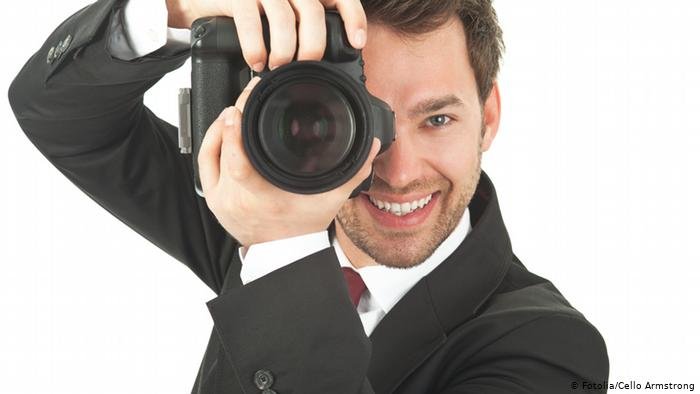At some point, the individual must stop taking pictures at random, and begin to take pictures professionally, whether for personal pleasure, or to try to start a career in photography. On this subject, professional photographer and academic writer Grant Scott presents ways to develop your photographic skills.
We pick up a lot more pictures than ever before. We publish photos on social networking sites, share them with friends, and use them to document where we are, what we do, and what we feel. But few of us can express ourselves in pictures, claim to be a professional photographer, or understand the meaning of this function.
So, how can you try to understand professional photography, and what does it take to make a living?
The answer is very simple: we need to explore the work of professional photographers, and reflect our concerns during any photography we do.
There are several examples of professional photography, including: fashion, music, personal photos, documenting social activities, travel, and hobbies such as plant gardening and gardening.
Focusing on our concerns, we can achieve the required technical vision and commitment to that vision in our business, which will in turn reflect on the nature of the images we will pick.
Thanks to the progress made in the design of the cameras, it is possible to capture technically good images that may be considered by many of the professional standard, but the professional photographer must be all the work of this standard. Professional photographers must be able to tell a story through a series of images and have a specialty in a particular area, which will make it easier for the customer to cost him a job.
There are ten tips to help enhance your photography skills:
1 - When shooting people, do not rush, and spend sufficient time with your subject before, during and after taking the picture. Try to identify the person you are imagining, show your interest in them, their lives, and their opinions. Then, they will feel relaxed, as if taking a picture of them is a joint work between you.
2 - Do not be afraid to take a lot of pictures, it shows your willingness to experience different angles, modes, lights and methods in your pictures.
3 - You can be affected by the photographic work that you like, and show the impact in your pictures, but you should not be a copy of your work.
4 - The temptation to modify images through computer programs, such as Photoshop, is not pursued unless it is needed. Bad alterations may spoil a beautiful image. So, try to capture your photos "set".
5 - Spend enough time taking photos, and do not expect success in the first time or every time. Be prepared to learn from your mistakes, and review the images that may have failed in your opinion.
6 - Use your smartphone to make drafts of photography, by taking new pictures every day, and focus on the elements of lighting, and the installation of shapes, unexpected elements, and anything that helps you break your expectations for "good photography."
7 - Look for inspiration in all forms of art, whether movies, music, television, clothing, designs, museums, books or magazines. Saturation of popular culture, and know the use of images as a way to communicate.
8 - Listen to the opinions of your friends in your work, but do not affect them very much, and do not make the views of the unconscious discourages your resolve. Find ways to reach your favorite photographers and ask for their views on your work when you create a collection of your successful photos.
9 - risk your images, and limit your perception of the successful picture. Enjoy your time.
10. Understand technical rules, but do not limit them to your potentials and ambitions.

We still do not know one thousandth of one percent of what nature has revealed to us.
- Albert Einstein